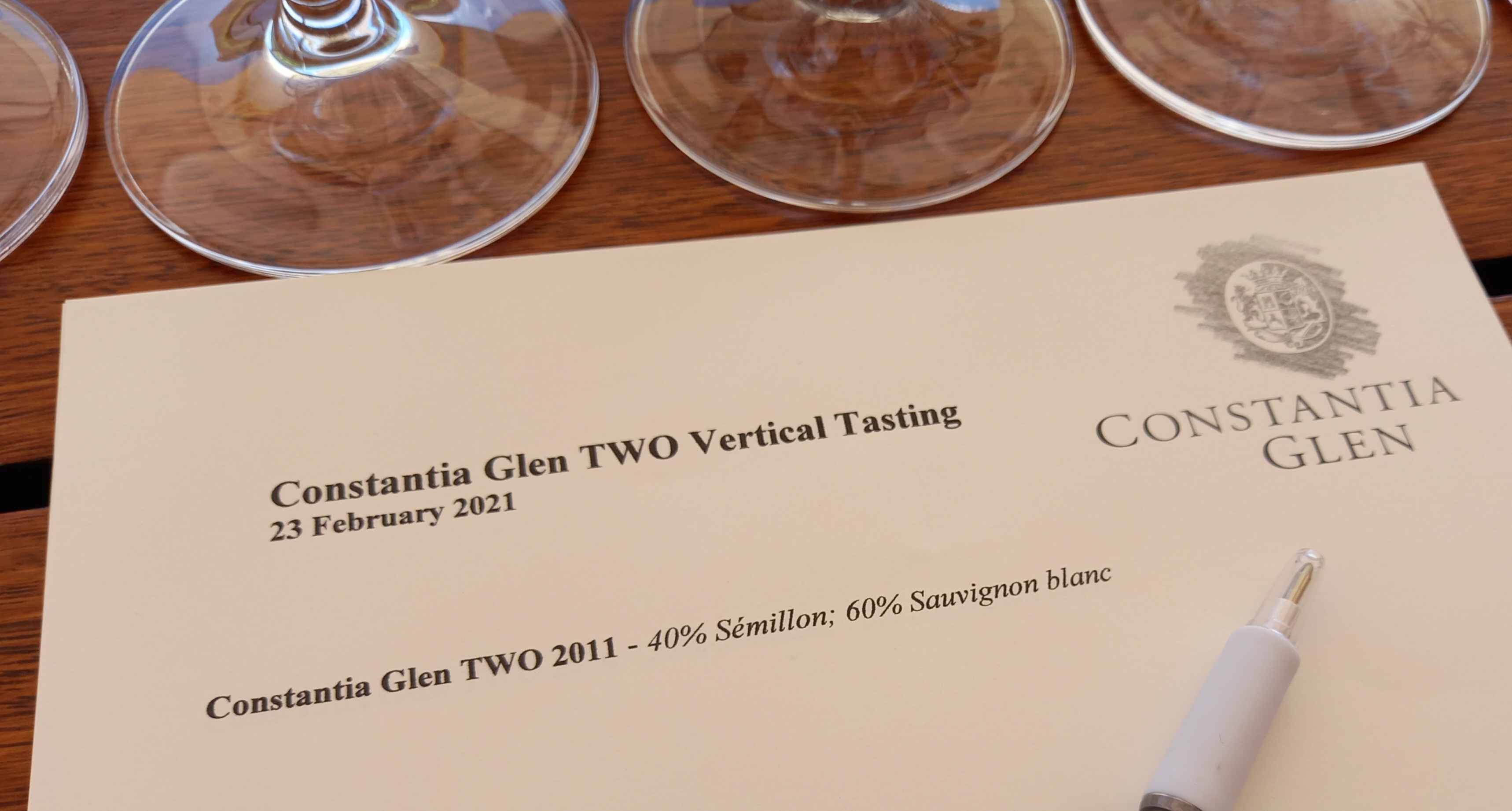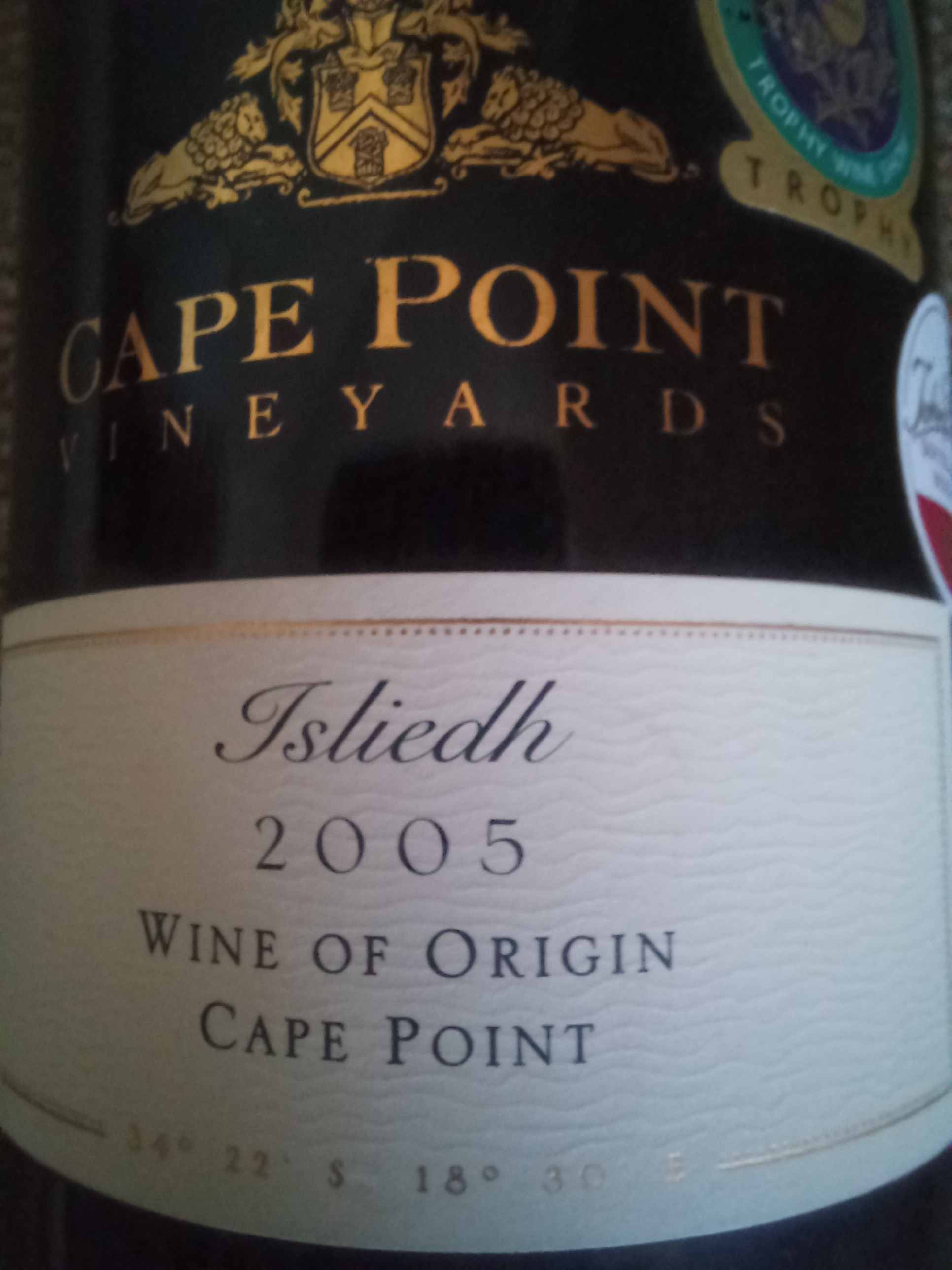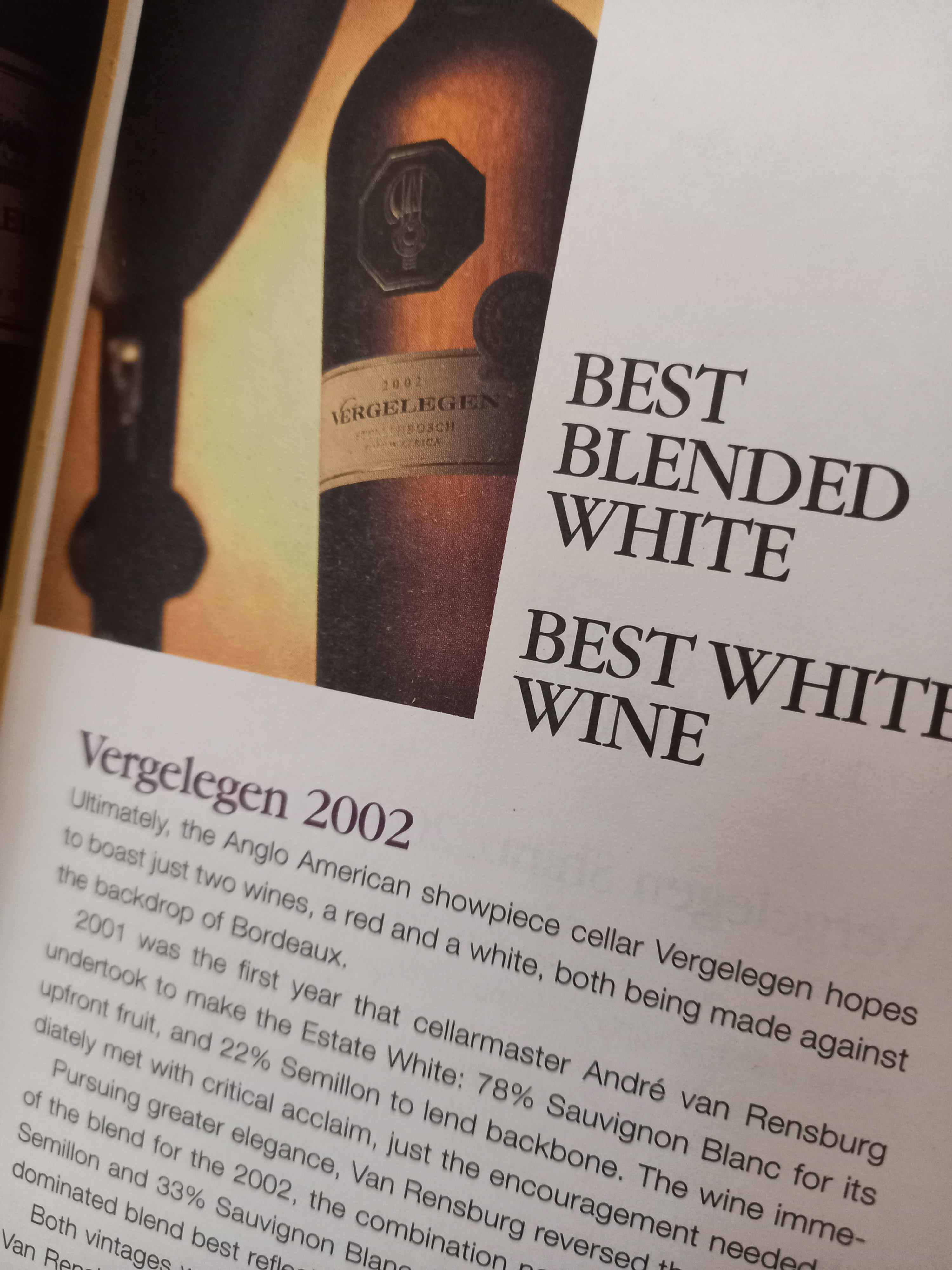A tasty conundrum
It’s a real headscratcher: why don’t Sauvignon Blanc-Semillon blends sell better?
This was the question which came up for discussion at a recent vertical tasting of nine vintages of Constantia Glen’s Two –from the maiden 2011 to the current release 2019. The small but impeccably socially distanced group of tasters had just raved about the wines – and not just how well they had aged but the impressive nuances of flavour and the texture and mouthfeel.
“It’s a hard sell,” said winemaker Justin van Wyk. Constantia Glen has around 15 000 bottles of the 2019 to take to market – and he said it will probably take at least three years to deplete the stocks. “It’s the slowest seller of all our wines, but I don’t mind it because I believe this is the wine that the whole Constantia region can hang its hat on,” he said.

Above caption: Constantia should hang its reputational hat on blended Semillon and Sauvignon Blanc Constantia Glen winemaker Justin van Wyk believes.
It’s a style of wine that improves as it ages with the Semillon contributing baked apple and typical waxy, honeyed notes – and a textural richness while retaining the perky brightness and acid freshness of the Sauvignon Blanc.
It was a sentiment echoed just days later on a visit to Tokara with GM Karl Lambour and Stuart Botha both bemoaning the lack of love for their excellent Director’s White. After all, Tokara Director’s White 2017 with 95 points was the best Sauvignon Blanc-Semillon blend at the Prescient Top 20, a review of all 927 wines tasted blind by Winemag.co.za during 2020. The same wine garnered 95 points from Tim Atkin, 94 at the Decanter World Wine Awards, gold at the Old Mutual Trophy wine show and a host of other medals and accolades. “Everyone agrees it’s a superb wine, it ages spectacularly, goes fantastically well with food but it’s difficult to move,” Lambour said.
Other names which were mentioned when discussing this topic at Constantia Glen were Steenberg’s Magna Carta, Cape Point Vineyards Isleidh, , Bartho Eksteen’s Houtskool, Cederburg’s Bowline, Highlands Road Sine Cera and probably the wine which kickstarted it: Vergelegen GVB – or Grand Vin Blanc. (The Isleidh in particular has a track record of 10 Platter 5 Star maximums between 2003 and the current 2019.)

Above caption: While the name Isleidh might not trip off the tongue too easily, Cape Point Vineyard’s Bordeaux-style white blend is a consistently excellent performer.
Not one to shy away from swimming upstream and taking on a challenge, Vergelegen’s Andre van Rensburg in his bombastic prime produced the showpiece estate’s first ever Sauvignon Blanc-Semillon blend in 2001, after only three years at the Helderberg estate.
“Ultimately, we’ll have only two labels: a red and a white that will stand with the world’s top handful,” Van Rensburg is quoted as saying in the 2002 Platter Guide. The Guide’s editorial blurb further stated: “The red version, known simply as Vergelegen, has already established its class; the white, a Graves-style blend, is about to fly. Like its master, it may arouse controversy. But it won’t be ignored.”
Well, sadly it appears that the market does ignore this style of wine – and it’s hard to fathom quite why. South Africans love Sauvignon Blanc. It’s the cash cow in most cellars because consumers are happy to shell out cash for the crisp, tangy, refreshing wine that’s ideal for local summer days. Semillon is also not an easy sell – but that’s changing with more and more winemakers bottling stand alone versions. In 2011 Platter’s index reflected just 25. Fast forward a decade to the current 2021 issue and there are 53... And some of the producers changing people’s minds about Semillon are the Alheits, Thorne & Daughters, Boekenhoutskloof, Sadie and Anthonij Rupert.
But back to Van Rensburg. When the Vergelegen 2002 was judged the best blended white and best white wine overall at the Trophy Wine show, it comprised 67% Semillon and 33% Sauvignon Blanc, an almost total volte face from the maiden 2001 in which Sauvignon Blanc dominated at 78%.

Above caption: Vergelegen’s white blend of Sauvignon Blanc and Semillon is, in cellarmaster Andre van Rensburg’s opinion, the best expression of the Estate’s site.
A Semillon-dominant blend was – in Van Rensburg’s opinion – the best reflection of Vergelegen’s potential. Vergelegen went on to rule the class at the Trophy show for the next few years until it got to the point where Van Rensburg demanded the floating trophy stay at Vergelegen permanently! Coincidentally, Cape Point Vineyards Isleidh, Tokara Director’s White and Steenberg Magna Carta have claimed that trophy in recent years. The respective winemakers at the time all had interesting opinions. Miles Mossop, then at Tokara, said the Vergelegen white had provided inspiration for the Director’s Reserve but ultimately the Semillon component added depth and texture – “rich, fat and oily” was how he put it – to the blend. JD Pretorius said time in bottle – two years minimum – benefitted the Magna Carta since the textural qualities it brought about improved the wine.
Perhaps the answer to the conundrum lies in another pithy Van Rensburg quote, this time from the 2007 edition of ICONS, the Old Mutual Trophy Wine Show book. When the 2006 Vergelegen white won best white blend he said: “We never make more than 5 000 bottles because it’s not a very popular style. And that’s exactly what Vergelegen White should be – a non-commercial wine, a classic.”
- By Fiona McDonald